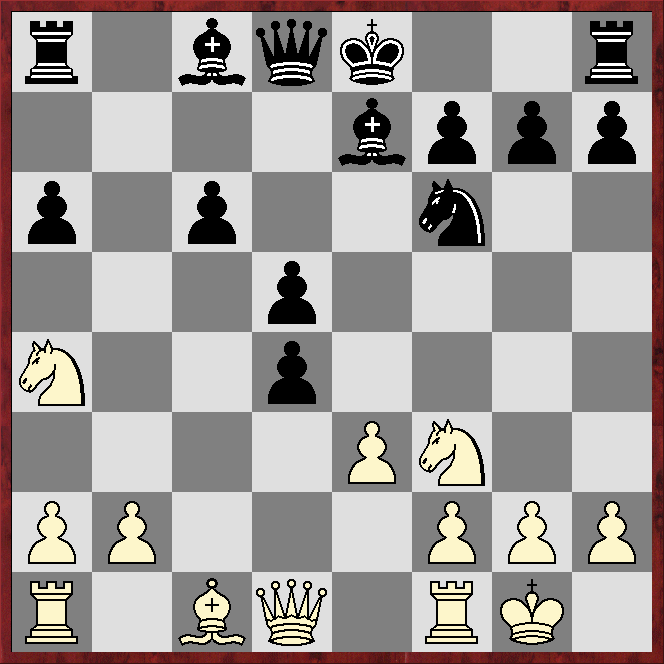Paul Remensberger (2038) - Spanton (1911)
QGD Normal
1.d4 d5 2.Nf3 e6 3.c4 Nf6 4.e3!?
*****
*****
*****
*****
4...c5
Stockfish17 and Dragon1 like the most popular continuation, 4...Be7, and also 4...b6. The text can hardly be bad, but it may be what White hopes to provoke as the text makes it is easy for the first player to create an imbalance.
5.cxd5 exd5 6.Bb5+ Nc6
In round three I played the more popular 6...Bd7 against a 1719, gaining an equal position out of the opening (but failing to gain the full point). The engines suggest the rare 6...Nbd7!?
7.0-0 a6!?
The engines are not keen on this, presumably on the ground that capturing on c6 is part of White's plan anyway.
8.Bxc6+!? bxc6 9.Nc3 Be7 10.Na4!?
 |
| 10.Na4!? seems to be a novelty, and is the top choice of Stockfish17, although Dragon1 fluctuates between it and one of the eight known moves, 10.Qc2 |
*****
*****
*****
*****
10...cxd4
*****
*****
*****
*****
11.exd4!?
The engines very much agree this is best. Indeed their second-choice move is 11.h3!?, claiming White has full compensation for a pawn after 11...dxe3 12.Bxe3.
11...Bg4 12.Qd3
The engines reckon White has the upper hand after 12.Qc2!?, eg 12...0-0!? 13.Ne5 (13.Qxc6?! Bxf3 14.gxf3 Rc8!? 15.Qxa6 Nh5 gives Black dangerous play) Bd6!? 14.Bg5!? Be6!? 15.Qxc6, although it is a series of moves unlikely to be seen at club level.
12...Bxf3!?
Giving up the bishop-pair is the engines' top choice.
13.Qxf3 Ne4 14.Nc3 Nd6 15.Be3 0-0
*****
*****
*****
*****
Black has the better bishop, but two pawn weaknesses (a6 and c6) against White's one (d4), although White's weakness is arguably the easiest to get at. The engines call the position equal.
16.Rac1 Nc4 17.Rc2 Re8 18.b3 Nxe3 19.fxe3!?
The engines prefer the other recapture.
19...Bf6 20.Rfc1
The engines suggest 20.Ne2 or 20.Na4.
20...Re6 21.Na4 Qe8 22.Rc3 Bg5 23.Re1 h6?!
The engines reckon 23...Bf6 24.Rd3 Be7!? is good for Black, one line continuing 25.Qe2 a5 26.Rf1 Bb4 27.Rf3 Ra7!? 28.h3 h5 29.Kf2!? Rae7 30.Nc3 h4, when they give Black a positionally won game.
24.Nc5 Re7 25.g3 Bf6 26.Rd3 Re4!? 27.Qf2
The engines give 27.Rdd1 Re7 28.e4!? dxe4 29.Nxe4 Re6 30.Nxf6+ gxf6, after which Black has five isolated pawns, two of them doubled, but White has no more than the better part of equality, according to the engines.
27...Re7 28.Qf3 Re4!? 29.Qf2 Re7 ½–½



No comments:
Post a Comment